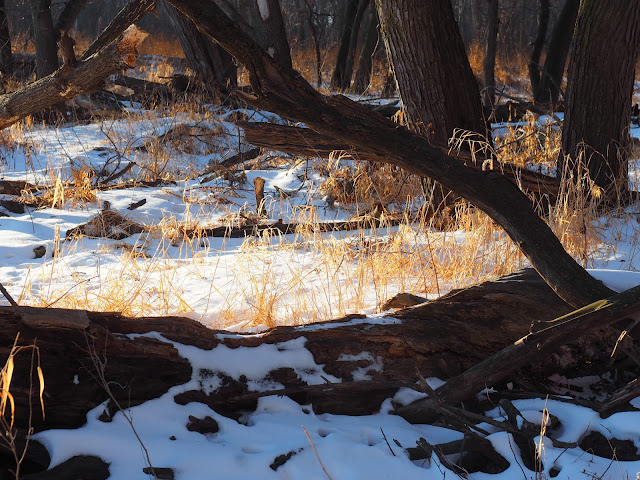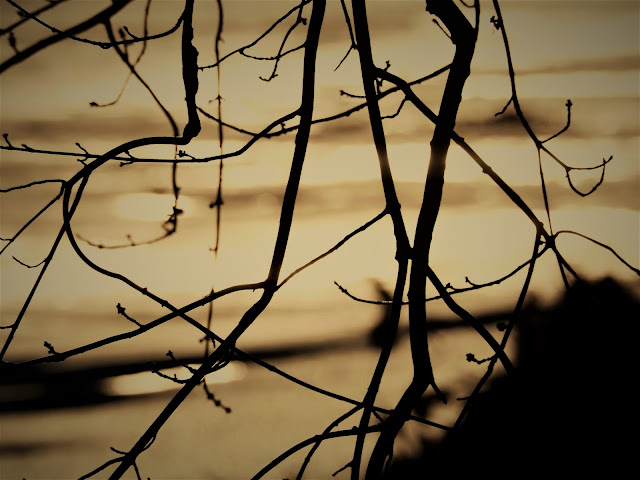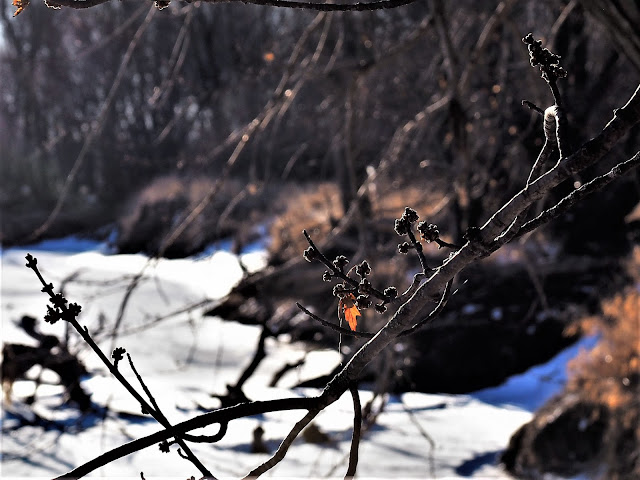The first matter of business when white folks came to the region was roughing out claims so they knew where each of the others was going to put down roots. Once that task was done, some of ye olde pioneers made sure to cut paths to the rivers, life lines really, because it was not at all difficult to get lost at sea in an ocean of grass. Those paths helped people remember where they were.
Back then, a place like this–a river bank–was its own kind of refuge. If you were going to meet any other human being, you’d meet ’em along the rivers, the only thoroughfares around. The first Hollanders set down roots along the Floyd River, just to be safe. Transportation and commerce?–it was all happening here, on the rivers.
No more. Today, the river banks are cluttered with dead cottonwoods spring floods take out, then leave thoughtlessly upended behind, severed limbs of unimaginable creatures, a junk yard of sprawling spare parts.
Makes the river bank seem a ghost town. In winter especially, there’s no reason to be here, no ice fishing, and not much at all in the line of bird-watching, maybe a couple of lousy sputsies, a crow or two, and, if you’re lucky, a red-tailed hawk. But most hawks are perched on fence posts along highways, waiting for road kill. There’s not much here, really. It’s quiet too; when the river is frozen, the water has nothing to say. There’s some drumming from an optimistic woodpecker, and, once in a while, a pick-up passes. Otherwise, the river bank’s silence is profound.
I’m a half-dozen miles north from spot where the first county commissioners (that’s what the yokels called themselves) put up a shack and called it a courthouse; and three or four south, maybe, from the place where a couple dozen people in log houses called their first Sioux County settlement “Calliope.”
Visitors were few in 1861, but had they thrown together a sod house in the prairie grass twenty miles east, where sits Orange City today, they’d have likely seen no visitors at all. Here, along the river, human beings occasionally passed by in canoes and on foot on land. Back then, to call the river an interstate would have been a stretch, but a place like this was the only quarter in the region where things were happening.
Today, on a cold winter morning, the river bank is a ghost town–a bunch of turkeys maybe, three or four deer if you sit tight.
Nobody’s around. Some few four-legged residents leave tracks as a reminder this spot isn’t as desolate as you might want to think.
In fact, the river may well be an interstate today. I’m standing in South Dakota, after all. There’s proof left in the river’s snowy quilt that more than a few locals determined at one time or another to visit Iowa, right over there on the other side.
In all truth, there’s no reason to be here, nothing to be done here, no money to be made. Nothing happening, nothing going on. Nothing to see. Even now, early morning, there’s no one with whom to have coffee. Let’s just say it this way: there’s no real use to be here, just as there’s no real use to beauty.
Posted by J. C. Schaap at 6:14 AM No comments: ![]()
![]()









